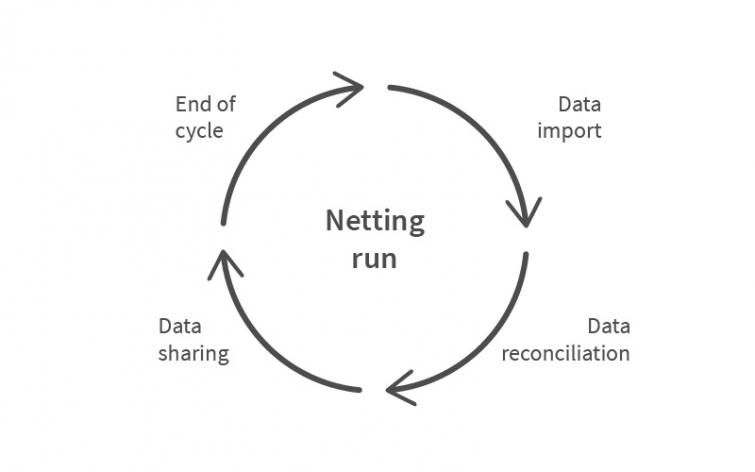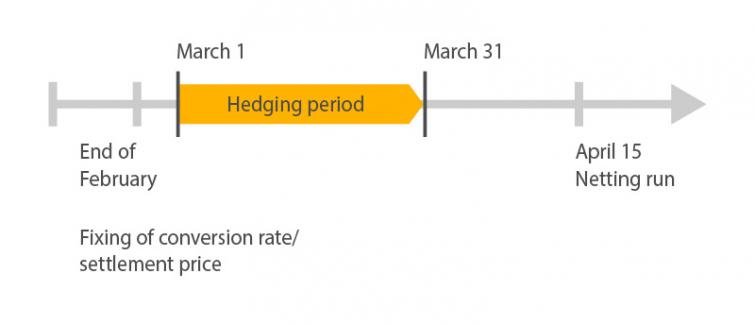The Role of Netting in Cash Management

Cash management is every company’s bread and butter. Considerably fewer companies make use of netting, despite its many advantages for cash management. Netting supports companies in making their cash management more efficient and less costly by:
- Boosting cash flow efficiency
- Consolidating invoices and enabling faster cash allocation
- Allowing companies to better calculate their FX exposure and hedge it strategically
Cash management
Through cash management, companies ensure they can always meet their financial obligations. It allows them to allocate the required liquidity to the right entity, at the right time, in the right currency. For treasury to achieve that, all incoming and outgoing payments as well as account balances and forecasts must be visible. With access to complete and up-to-date information, treasury can monitor processes plan liquidity based on forecasts, unlock working capital, and strategically manage cash in different currencies.
Netting
Companies that have implemented netting offset cash flow obligations between two parties and consolidate them to a net payment. Most companies use netting for balancing intercompany trade flows. However, it is also possible to integrate other parties as netting participants. Using internally-agreed conversion rates, companies can engage in cross-currency netting.
The impact of netting on cash management
Netting takes a specific proportion of all cash flows and places them within the framework of a dedicated and structured process. This process, the netting run, is repeated at regular intervals. It can be divided into four steps:
- Data import: Data is imported from the ERP system to the netting system.
- Data reconciliation: The netting system automatically matches and consolidates submitted payables and receivables based on pre-defined parameters and creates a netting statement.
- Data sharing: Once data has been matched and invoices consolidated, the netting center communicates the net amount to every netting run participant. It can be issued in their currency of choice.
- End of cycle: The netting center makes one single payment to participants with a positive balance. Participants with a negative balance make one net payment to the netting center.

Netting boosts cash flow efficiency
By offsetting payables and receivables, netting reduces the number of transactions. In turn, this reduces cash-in-transit. And reduced cash-in-transit and minimal transactions make for reduced efforts when it comes to procuring liquidity, interest burden and payment processing.
In addition, the schedule of the netting run means payments are made on a specific date: instead of having to monitor countless different dates, treasury can lean back and wait for the end of the netting cycle.
Netting makes the lives of cash managers much more linear: they can plan accurately and allocate the exact amounts of required funds to accounts. This means that the company can keep floating assets to a minimum. Netting lends structure to complex processes and ensures optimal allocation of cash flows.
Netting accelerates cash consolidation and allocation
All transactions between two parties result in accounts receivable for one company and accounts payable for the counterparty. The respective journal entry must show a zero balance. However, without a structured process in place, consolidation efforts are often far from straightforward. The different parties pursue different interests — either receivable- or payable-driven.
A good netting process seeks agreement between the parties and allows them to clarify any disagreements within a structured and automated framework. Agreement-driven netting encourages participants to submit accurate data. This makes for a much faster reconciliation process and makes it possible to automate several steps of the netting cycle. A speedy reconciliation process is followed by swift payment processing — directly in the system and with one click — and makes for greater efficiency.
Faster consolidation has a positive impact on cash flows. At the same time, netting saves treasurers valuable time when it comes to monitoring invoices. Conversely, accountants no longer need to waste hours matching invoices. On average, time savings amount to 1–2 man-days per month per entity. For a group consisting of 10 entities, this equals 10–20 days per month and 240 days per year — a full-time position that can be dedicated to other tasks that add real value to the company.

Netting optimizes FX management
Netting makes it easier for companies to manage their FX exposure, i.e. to optimize their FX management.
The payment terms defined as part of the netting cycle govern the timeframe between issuing an invoice and paying it. Companies that use cross-currency netting also set internal conversion rates for the currencies in question that apply to the respective netting cycle.
Having defined dates and rates, treasurers gain insight into an entity’s hedging requirements for a specific time period and can consolidate this sum to one hedging transaction. The netting center also defines the settlement price that is used to convert each entity’s FX payments to the respective settlement currency. This creates implicit hedging. The netting center can post and settle the transactions for each netting run participant without impacting the FX result. Entities transfer their actual currency exposure to the netting center, where it can be hedged strategically.
How netting optimizes FX management – an example:
As part of a monthly netting cycle, a company defines a payment term of 30 days. An entity issues and posts an invoice in March, which is paid in April. In February, the netting center defines the FX rate for March, and the March rate is identical with the settlement price for April. The netting center has complete visibility of currency requirements and can hedge the FX exposure centrally. Transaction and conversion costs are reduced to a minimum.

Netting and cash management in a nutshell:
Netting is a powerful tool for companies to optimize their cash management. Netting lends structure to offsetting cash flows and puts them into a clearly defined timeframe, the netting cycle. This has the following benefits:
- Very precise account planning
- More efficient cash flows
- Faster consolidation
- Option to automate processes
- Speeding up of the cash allocation process
- Visibility of FX requirements
- Strategic FX hedging
Time to discover Coupa's wide range of treasury services.
Check Out Coupa Treasury